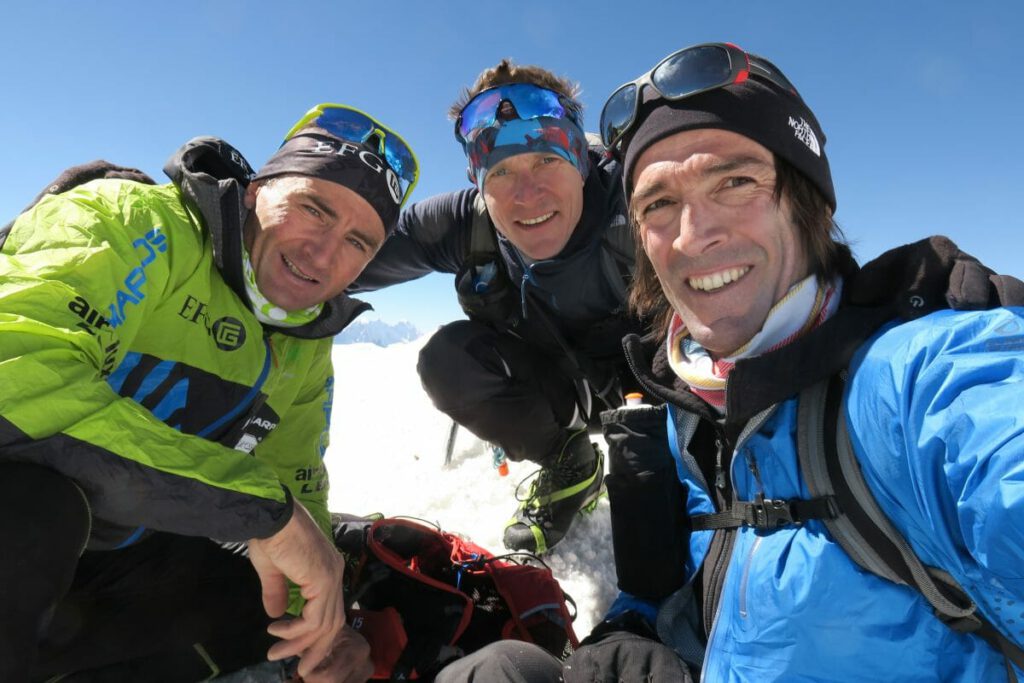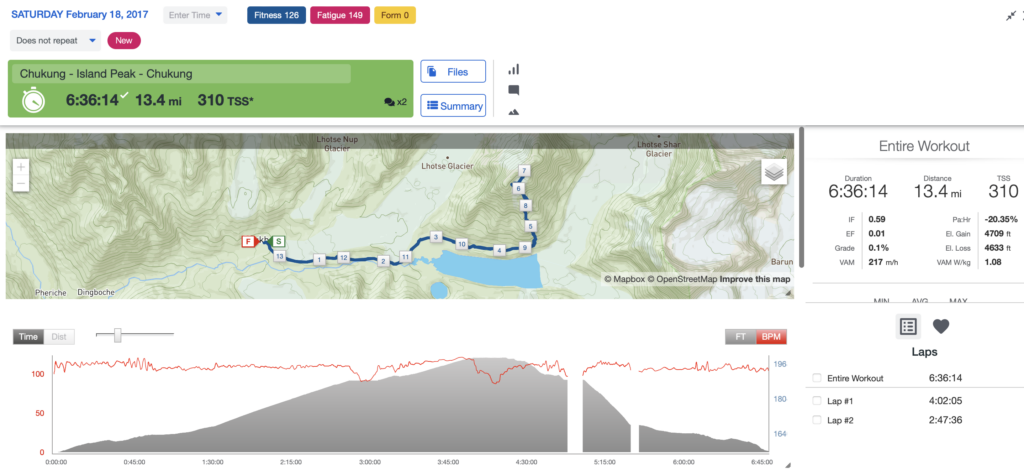Our Training Philosophy Put to a Test by Elite Alpinists
By: Scott Johnston
Posted:

Aerobic Work Capacity! Why are we so focused on it?
Early in my athletic and coaching career, I connected some previously unconnected dots and had the proverbial aha moment that has shaped my training philosophy ever since. Over the past 30 years of achievements, personally and with our clients, that philosophy has stood the test of time.
Yet we still run into mountain athletes and coaches who continue to use training methods more suited to sport climbers and 5,000-meter runners because they think high-intensity training is a shortcut to long-duration endurance.
What does climbing high mountains look like from a metabolic standpoint? And, more importantly, what are the implications for training?
Several years ago, I collected data for some of the best alpinists in the world while they were doing a two-week training camp up at elevations from 15,000 feet (4600 meters) to 20,000 feet (6,100 meters) in the shadow of Mount Everest.

I’ve shared this information in the past. Still, it is vital to get across that sharing this information again on the Evoke Endurance website will help others understand the importance of building the basic aerobic capacity for success as mountain athletes.
David Göttler, whom I am still coaching, and Üli Steck, whom I consulted with on his training before his sad death on Nuptse, both wore their heart rate monitors and uploaded the workouts so I could view them in near real-time. One of the first things I noticed was how low their heart rates were during all their runs and climbs. The average and peak heart rates were much lower than when they trained at home in the Alps.

At the time, and still so today, I felt that presenting this data would help convince skeptical readers that there is something to this. Later in the article, I will provide the theoretical bases for my conclusions.
Below is a screenshot of the workout data download from the day they climbed Island Peak. The red line represents David’s heart rate. The gray is the elevation gain (about 1,500 meters), and the horizontal scale is time in hours and minutes. David’s Aerobic Threshold (AeT) is approximately 155 bpm at sea level. His maximum heart rate on this workout was 133. They were climbing at a controlled aerobic effort similar to how they would feel at home: gaining 1,500 meters in 2 hours and 40 minutes. After 15 minutes on the summit, his resting heart rate dropped to only 95 bpm, 50 beats above his low-elevation resting heart rate (indicating that he was not well acclimated). This gave him a minimal effective working range from 95 to 133 bpm. He better have an excellent low-end work capacity because he can’t access the high-intensity top end of his metabolism.

There are several prevailing theories as to why this occurs:
Taken together, all three stack the deck against those leg muscles being able to get enough oxygen to power high-intensity movement. From this line of reasoning, it should be obvious why climbers at 8000m typically can ascend about 100 meters vertically per hour, whereas at sea level, 1000 meters/hour is not unusual
Here is the critical takeaway: With heart rates so limited, even these very well-trained athletes cannot operate at high intensities. They cannot work hard enough to get their heart rate into Zone 2, let alone Zone 3 or 4. They just can’t access the higher-power muscle fibers trained with high-intensity (high-heart-rate) workouts and which primarily consume glycogen for fuel. They are restricted to their humble slow twitch fibers, which rely almost exclusively on fat for energy. Our training goal is to get their pace at their Aerobic Threshold/top of Zone 2 as fast as possible because, at those altitudes, that is their top end metabolically.
Decades of evidence across the whole gamut of endurance sports shows that there is only one way to elevate your pace at the aerobic threshold. Hours upon hours, month after month, for year upon year of low to moderate-intensity training is required to boost this quality. This long-term consistent endurance training leads to dramatic increases in mitochondrial density in the muscle fibers and the aerobic enzymes responsible for aerobic metabolism. This type of training also results in a proliferation in the dense network of capillaries around those working muscle fibers. Hence, the oxygen has less distance to transit from capillary to mitochondria.
No amount of high-intensity training can provide the needed metabolic or structural adaptations for optimal performance at altitude. It simply works through an entirely different system. In the wrong dose, the high-intensity training that is often prescribed as training for mountain athletes, especially alpinists and mountaineers, can be detrimental to aerobic development. Nevertheless, I still see this ill-informed prescription used.
These alpinists cut 30 minutes off last year’s identical climb of Island Peak and felt much less tired when they returned to their lodge in Chukung. This represents a performance gain of over 8 percent for already very well-trained athletes in about eight months. We have seen improvements of over 30 percent in similar tests by less well-trained athletes we’ve coached.
Special thanks to Dr. Monica Piris, MD, and Dr. Scott Ferguson, Ph.D., for their help with this article.